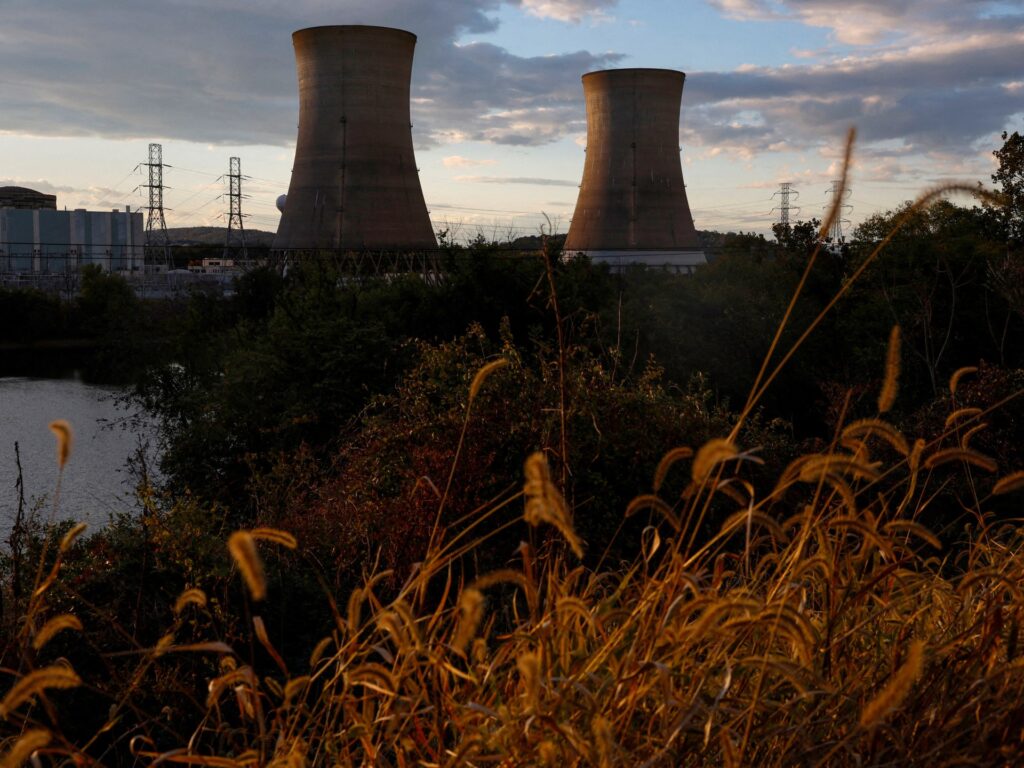A series of new executive orders seeks to fast-track approvals to grow the US’s nuclear energy sector, a lengthy process.
United States President Donald Trump has signed a series of new executive orders aimed at boosting nuclear energy production in the country, while rolling back regulations.
Friday’s orders, signed by Trump at an Oval Office event, called on the nation’s independent Nuclear Regulatory Commission to cut down on regulations and fast-track new licences for reactors and power plants.
One order requires the body to make decisions on new nuclear reactors within 18 months. That would severely pare down a process that can take more than a decade. Speaking from the Oval Office, Trump described the nuclear industry as “hot”.
“It’s a brilliant industry. You have to do it right,” he said, flanked by CEOs of nuclear companies, as well as Defense Secretary Pete Hegseth and Interior Secretary Doug Burgum.
Burgum told reporters that the president’s actions would “turn the clock back on over 50 years of overregulation” in the nuclear industry.
Trump’s orders also called for assessing staffing levels at the Nuclear Regulatory Commission and directed the US Departments of Energy and Defense to work together to build nuclear plants on federal land.
Building more nuclear reactors, an official told reporters in advance of the signing, is aimed in part at addressing the increased energy needs created by artificial intelligence (AI) technology.
It was not immediately clear how much authority Trump and the executive branch could assert over the Nuclear Regulatory Commission, which Congress created as an independent agency in 1974.
Trump’s orders also called for growth in the domestic production and enrichment of uranium, the primary fuel used in nuclear power.
‘National energy emergency’
Trump has focused heavily on energy industry deregulation since taking office for a second term in January, but much of the emphasis has been directed at fossil fuels.
On January 20, the day he returned to the White House, Trump declared a “national energy emergency”.
As part of that order, he called on the heads of federal agencies to identify any emergency powers they could use to “facilitate the identification, leasing, siting, production, transportation, refining, and generation of domestic energy resources” on federal and non-federal land.
He further called high energy prices an “active threat” to US citizens and national security.
Nuclear energy has long been a thorny issue in the US, splitting those who seek alternatives to fossil fuels.
On one hand, the industry offers a means of producing energy with low levels of greenhouse gas emissions. But on the other hand, the production of nuclear energy creates waste that can remain radioactive for long periods of time, and requires special storage to ensure public safety.
Nuclear power also carries the risk of rare, but potentially cataclysmic, accidents.
For many, incidents like the Three Mile Island accident represent the possible dangers. In 1979, the nuclear generator on Three Mile Island in Pennsylvania suffered a mechanical failure, releasing radioactive gases into the air and spurring a backlash against nuclear power.
Even with Trump’s regulatory rollback, many experts in the field believe it would take years for the US to scale up its nuclear infrastructure.
